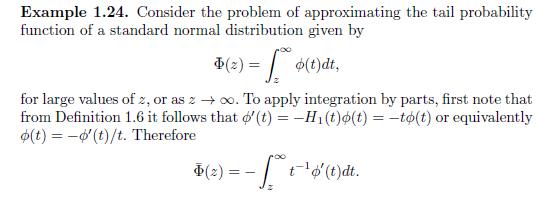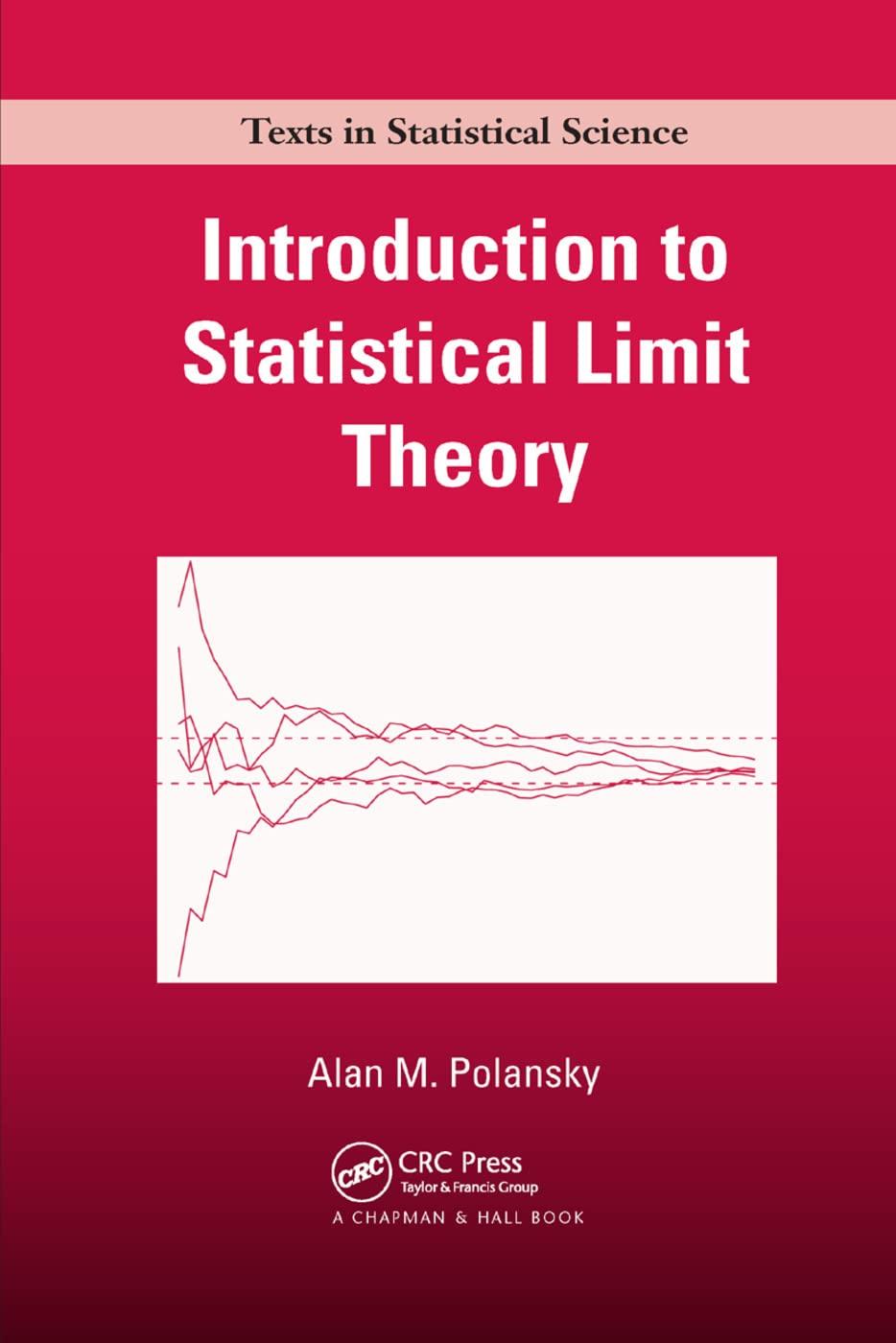Consider the approximation for the normal tail integral (bar{Phi}(z)) studied in Example 1.24 given by [bar{Phi}(z) simeq
Question:
Consider the approximation for the normal tail integral \(\bar{\Phi}(z)\) studied in Example 1.24 given by
\[\bar{\Phi}(z) \simeq z^{-1} \phi(z)\left(1-z^{-2}+3 z^{-4}-15 z^{-6}+105 z^{-8}ight) .\]
A slight rearrangement of the approximation implies that
\[\frac{z \bar{\Phi}(z)}{\phi(z)} \simeq 1-z^{-2}+3 z^{-4}-15 z^{-6}+105 z^{-8}\]
Define \(S_{1}(z)=1-z^{-2}, S_{2}(z)=1-z^{-2}+3 z^{-4}, S_{3}(z)=1-z^{-2}+3 z^{-4}-\) \(15 z^{-6}\) and \(S_{4}(z)=1-z^{-2}+3 z^{-4}-15 z^{-6}+105 z^{-8}\), which are the successive approximations of \(z \bar{\Phi}(z) / \phi(z)\). Using R, compute \(z \bar{\Phi}(z) / \phi(z), S_{1}(z)\), \(S_{2}(z), S_{3}(z)\), and \(S_{4}(z)\) for \(z=1, \ldots, 10\). Comment on which approximation performs best for each value of \(z\) and whether the approximations become better as \(z\) becomes larger.

Step by Step Answer:






